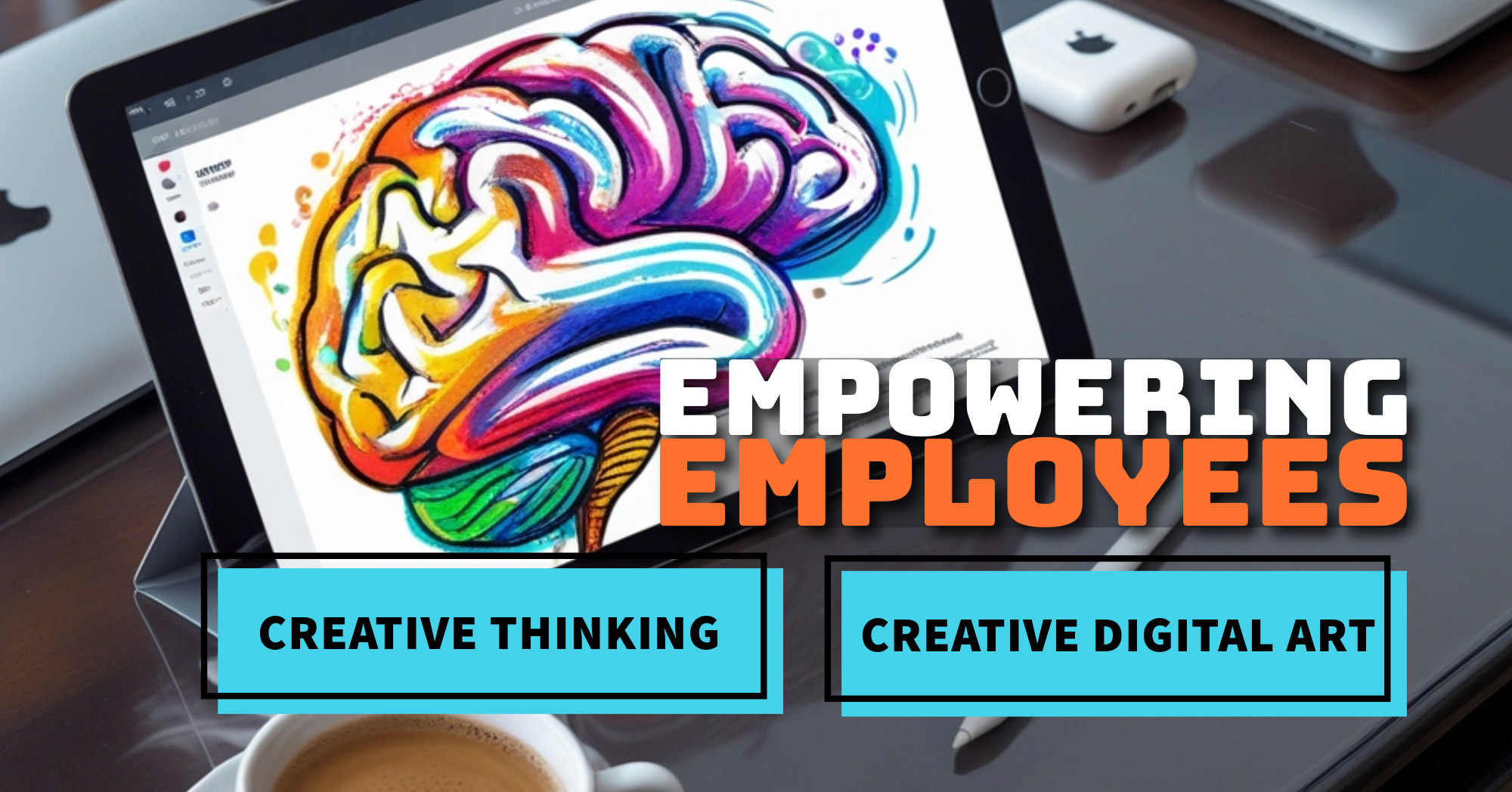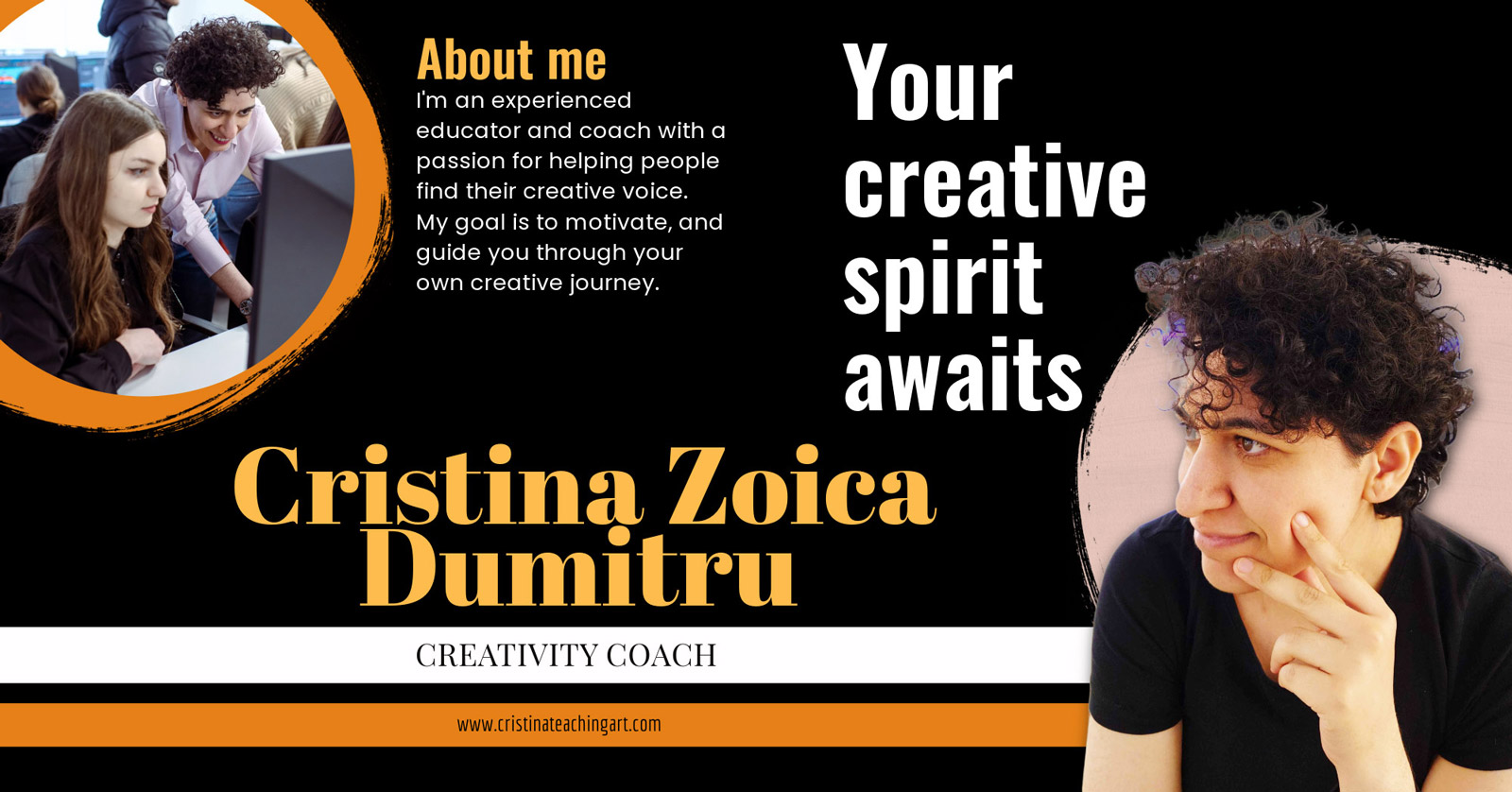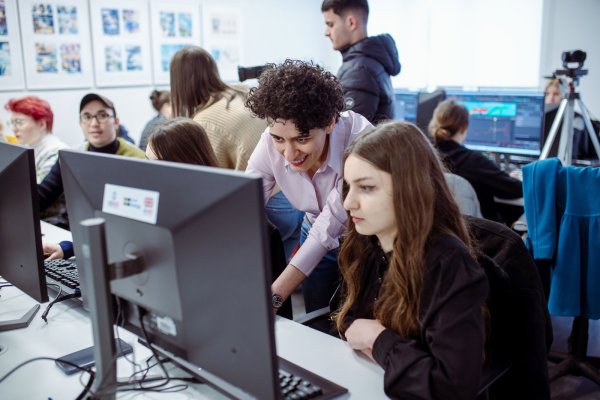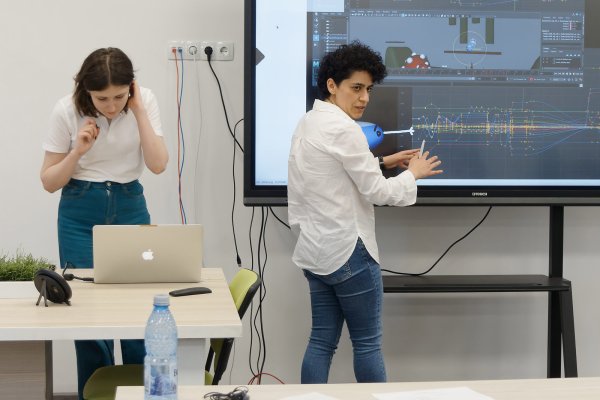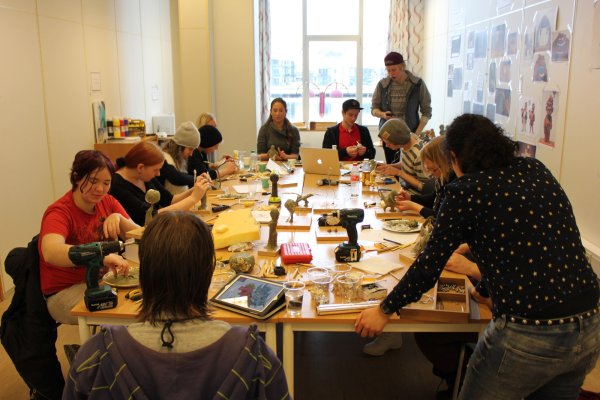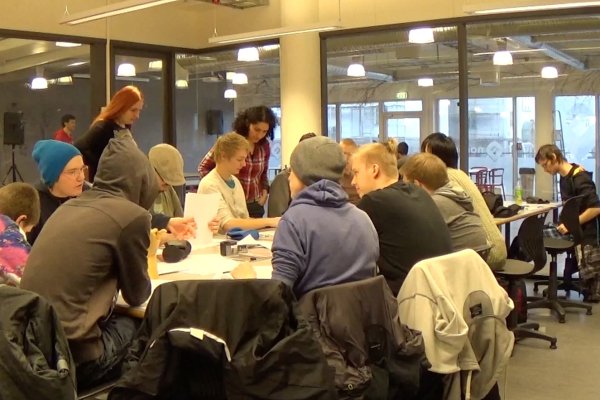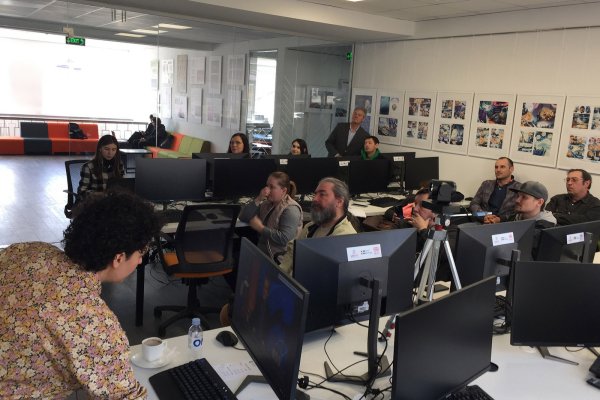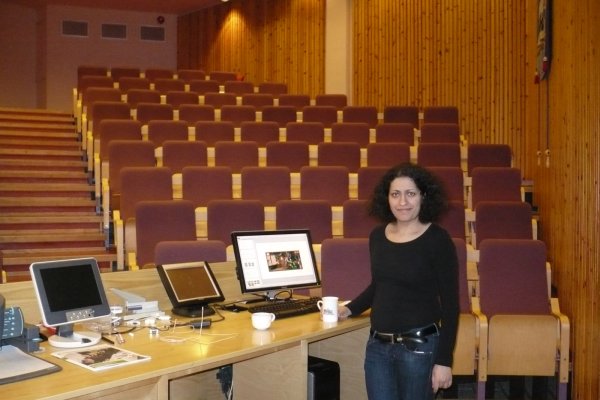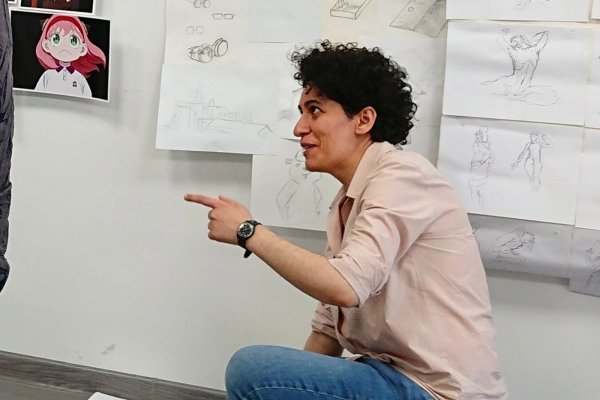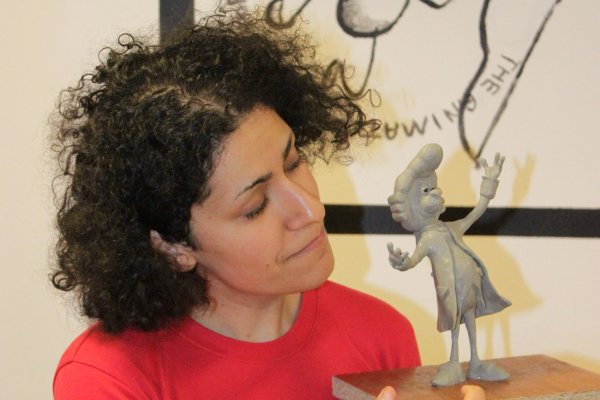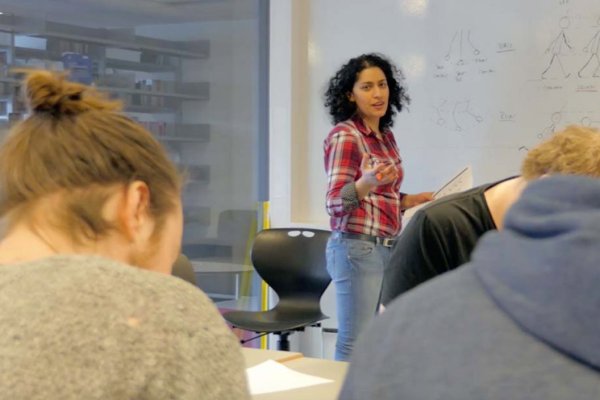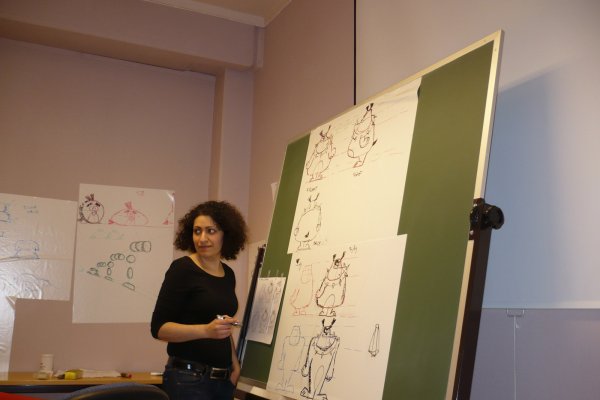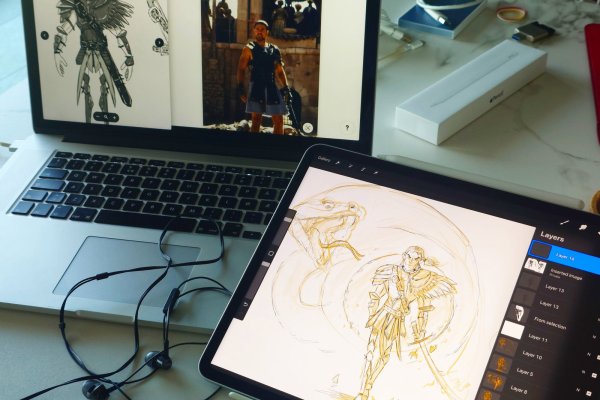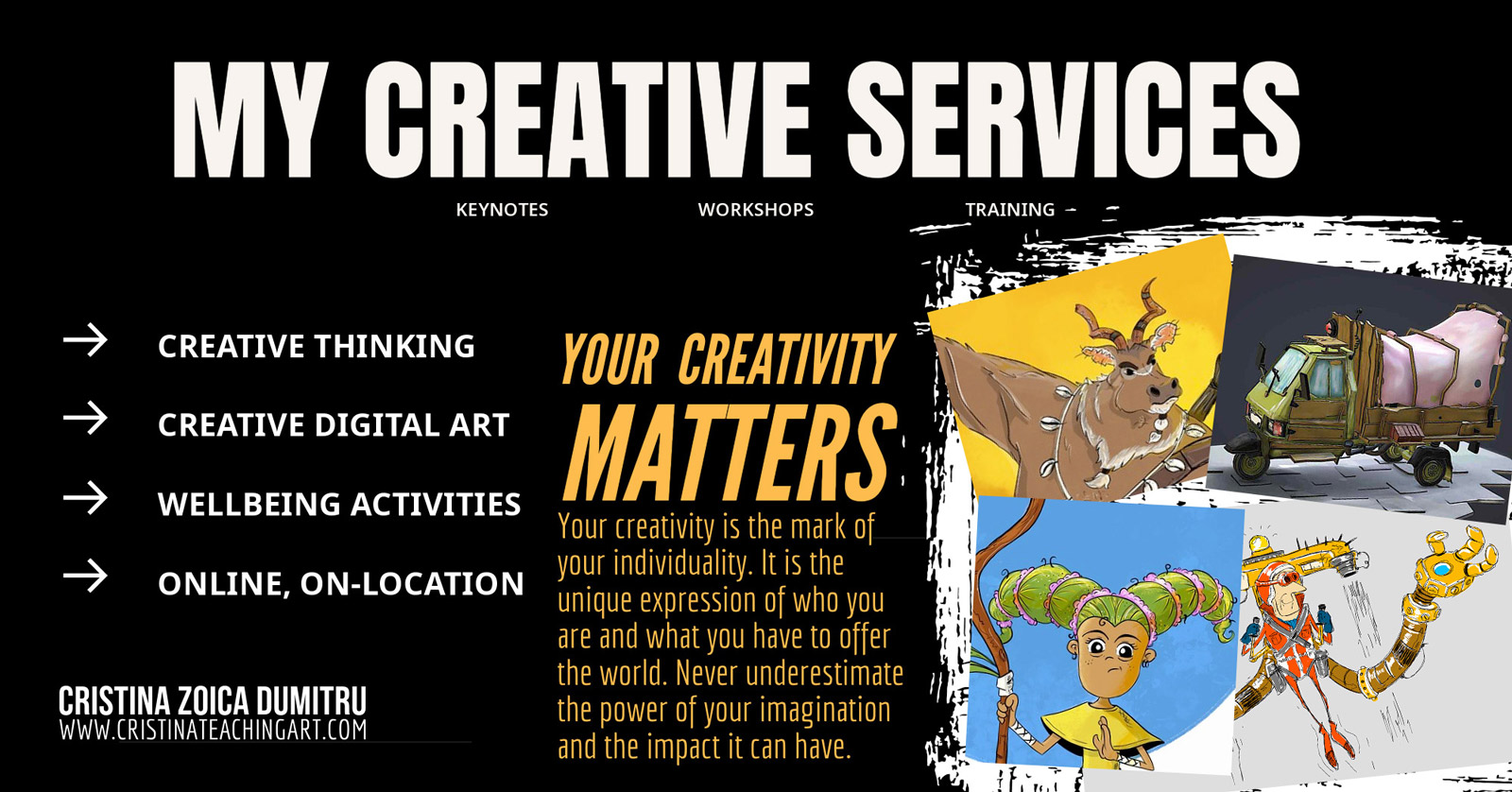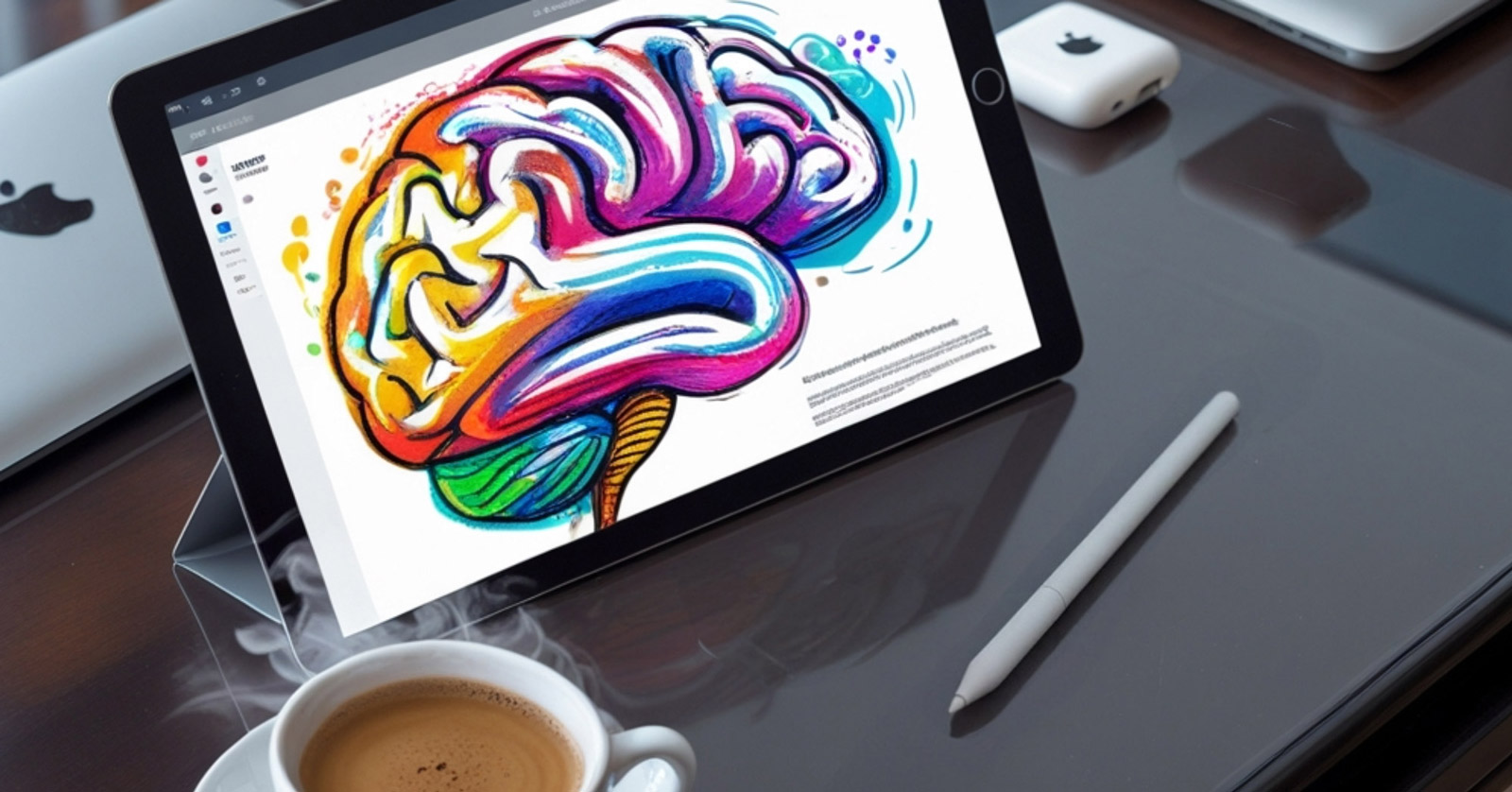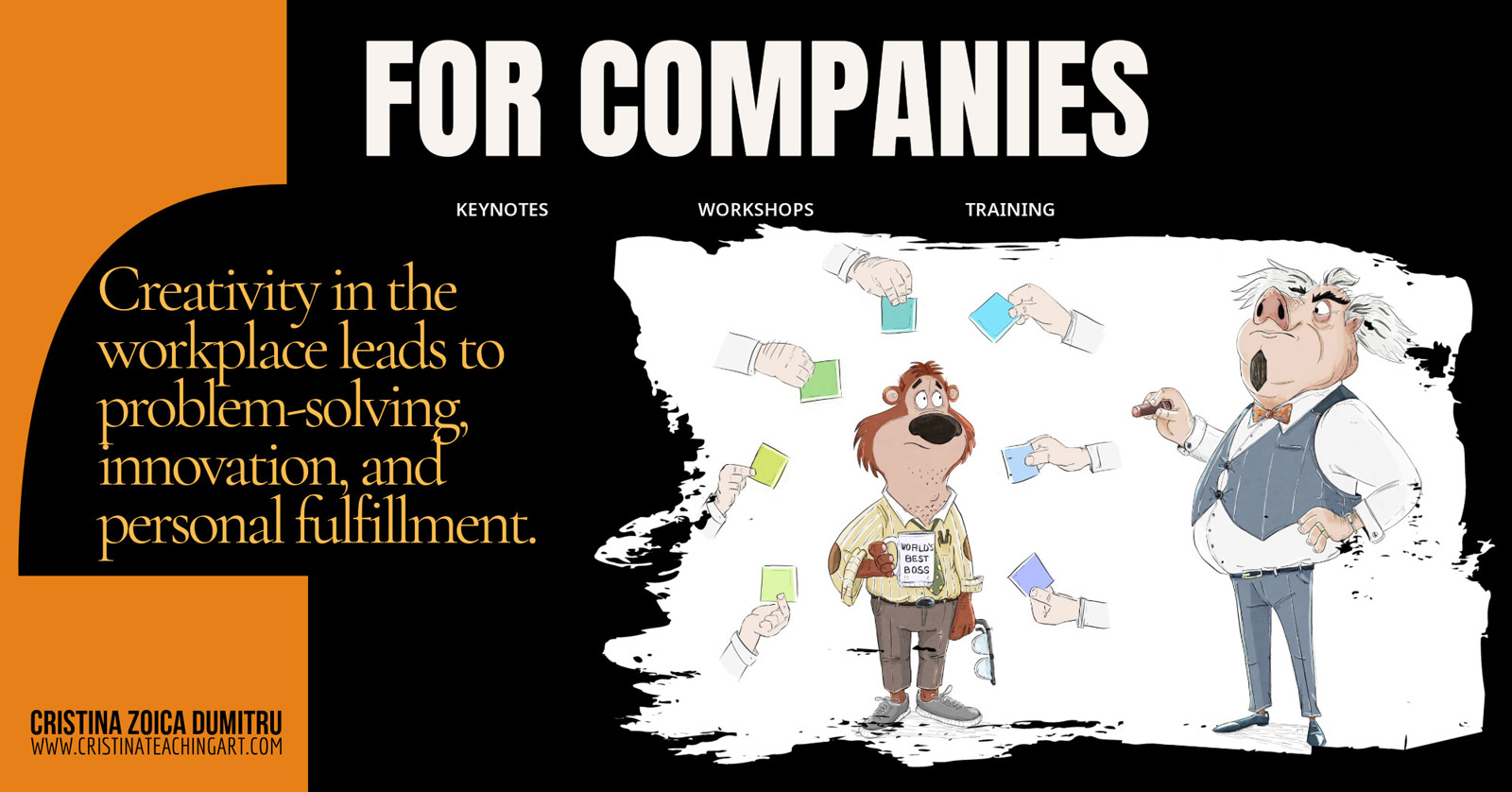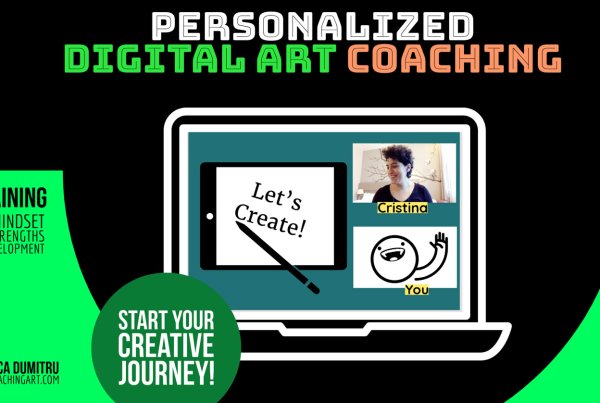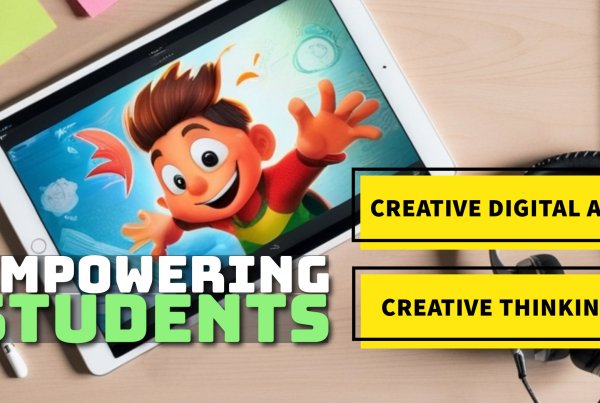JUMP TO
My creative services empowers companies to unleash creativity and imagination. My training is designed to foster creative abilities and creative thinking, providing an opportunity for employees to explore the world of digital art. Whether it’s through drawing, painting, animation, storytelling or interactive media, I equip people with the skills and confidence to explore their creativity.
About Cristina
My expertise lies in higher education for creative industries such as animated films, computer games, and interactive media. With extensive international experience, I have worked with universities and studios in Norway, Sweden, Denmark, the Netherlands, Moldova, the US, the UK, and Romania. My work spans consultancy, management in higher education, teacher training, course direction, lecturing, and digital artwork.
I combine my expertise in Education and Personal Development with my background in Digital Art to promote creative thinking.
Since beginning my teaching career in 2012, I have worked with hundreds of individuals and developed numerous international courses. My goal is to make cultivating creative thinking accessible to everyone, not just through the standard education system, but through customized methods.
Digital art implies a multitude of skills and activities such as storytelling, brainstorming, concept prototyping, technical workflows, effective time management, teamwork but above all, it’s a continuous practice of creative thinking and imagination.
Creative Services For Companies
I founded Cristina Teaching Art, where I offer digital art courses and educational coaching services. My mission is to challenge individuals to reach their maximum potential for creativity and authenticity. I offer creative services focusing on empowering individuals through art and creativity.
My services include:
- Workshops and Training Programs: Interactive sessions designed to enhance employees’ creative thinking and imagination skills.
- Art-Based Team Building: Activities that use art to improve collaboration and communication among team members.
- Creative Strategy Sessions: Collaborative brainstorming and planning sessions to develop innovative ideas and approaches.
- Personalized Coaching: One-on-one or group coaching to help employees tap into their creative potential and apply it to their work.
- Custom Art Projects: Creating bespoke art pieces that reflect the company’s values and culture, fostering a sense of identity and pride among employees, children of the employees are also welcomed.
Over the years, I developed a unique system to boost creative thinking and imagination. This system integrates various techniques and exercises that stimulate the brain to think outside the box.
By combining elements of art, psychology, and cognitive science, I have created a comprehensive approach that helps individuals unlock their creative potential. Through this system, participants learn to harness their imagination, enhance their problem-solving skills, and develop a more innovative mindset.
Whether you are an artist, a junior, or a professional, this method can be tailored to suit your needs and help you achieve greater creativity in your endeavors. I worked with hundreds of individuals to discover their unique voice, develop authentic art styles, and most importantly, build their self-confidence.
The Use Of Digital Tools
I use a variety of software, 2D and 3D, which can be used on multiple devices. Just to give a few examples, I utilize platforms like Adobe Spark and Canva for designing visually appealing graphics. I use digital whiteboards such as Miro to brainstorm and organize ideas collaboratively. I use Procreate, Sketchbook Pro to draw, paint or do collage artwork.
I also use AI generative tools to facilitate brainstorming sessions, prototype visual ideas, or stimulate our imagination. These tools provide a creative platform that helps me explore concepts, experiment with different designs, and generate innovative solutions.
All these, and much more, are dynamic and digital spaces for visual thinking, creative creation and real-time collaboration, making it engaging to develop and refine creative projects.
By incorporating digital tools and techniques, we can approach creativity from different angles and develop innovative ways of creation. For example, I have a regular creative practice of sketching on my phone.
Problem Statement
The reality is that 95% of people end up tired and frustrated in their daily lives, regardless of their profession. The average working person works for 40 years, with only 2 weeks of vacation a year. That’s about 90,000 hours at work over a lifetime.
Many people neglect their creative spirit, giving up on their dreams due to life circumstances, prioritizing making a living, family, and career. My goal is to show everyone, at any age, can cultivate creativity and imagination.
A lack of purpose at the workplace can lead to several significant problems, including:
- Decreased Engagement: Employees who do not find meaning or purpose in their work are more likely to feel disconnected and less satisfied with their jobs. This can result in reduced motivation and lower engagement levels, leading to a decline in overall productivity and performance.
- Burnout and Stress: A lack of purpose can lead to feelings of exhaustion and burnout, as employees may feel that their work is not meaningful or valued. This can result in increased stress levels and negatively impact both mental and physical health.
- Negative Workplace Culture: A lack of purpose can contribute to a negative work environment characterized by low morale, decreased job satisfaction, and increased turnover. This can create a toxic workplace culture that further exacerbates disengagement and reduces overall employee well-being.
Objectives
In everyday life, a creative mind is also an imaginative and relaxed mind. Creativity is a multifaceted ability that involves creation-based thinking, problem-solving, constructive thinking, resilience, joyfulness, and an enormous amount of patience.
Work-life balance is usually defined as the amount of time spent at work versus time outside of work. However, in my system, it means harmony—a complement as a way of pursuing personal growth and purpose while using and developing natural abilities.
Achieving a balance between workplace and individual development through the lens of work-life harmony involves integrating personal and professional responsibilities, promoting flexibility, supporting holistic well-being, fostering a supportive organizational culture, and encouraging personal responsibility.
- Engage in Creative Learning:
Office managers can promote well-being activities for employees, beyond free coffee and snacks. Pursuing continuous and creative learning and professional development can keep employees engaged and motivated. This can include taking courses, attending workshops, or seeking personal development opportunities. - Balance Work and Personal Life:
Office Managers can create opportunities for employees to choose creative activities to develop and grow their creative skills and imagination. Maintaining a balanced work-life balance is crucial for overall well-being. Employees should prioritize self-care, hobbies, and time with loved ones to ensure they have a fulfilling life outside of work. - Take Initiative and Be Creative:
My creative activities help employees tap into their creative potential and think outside the box. Employees can take the initiative to propose new ideas, lead projects, or suggest improvements. Being proactive and demonstrating leadership can create opportunities for meaningful contributions and personal fulfillment.
Benefits
Creativity is not just about art, creativity it’s a way of thinking. Our minds are always active, continuously making associations in all areas of our lives. However, you can learn to direct activity into creative thinking, not habitual thinking. Carl Jung said “Creative powers can manifest themselves in all spheres of life; they are not confined to the arts.”
The degree of our creativity generates and creates new kinds of ideas, solutions, and possibilities. It’s a different kind of thinking. It’s about developing a creative mindset, thinking outside the box with an attitude of confidence.
Among the benefits I bring are:
- Embrace a Growth Mindset:
Curiosity: Cultivate a sense of curiosity and wonder about the world around you. Ask different kinds of questions and seek out new experiences.
Visual Communication: Visual communication means storytelling; it’s how we communicate information and create experiences across a range of visual mediums.
- Generate Ideas Freely:
Brainstorming: Set aside time to brainstorm without judgment. Write down all ideas, no matter how outlandish they may seem.
Mind Mapping: Use mind maps to visually organize thoughts and explore connections between different ideas.
- Think Outside the Box:
Challenge Your Perceptions: Dare to think creatively, dare to be creative, dare to challenge your perceptions. In fact, dealing with perceptions is fundamental in creative arts.
Use Analogies: Draw analogies from other fields or areas of life to gain new perspectives on the problem.
Critical Observation: Observation is a skill, and like any skill, it can be learned and developed. But, critical observation is the keen ability to observe something with great attention to detail and accuracy above the surface level.
- Well-Being:
Self-Expression: All forms of arts represent a unique self-expression, it’s part of our emotional wellbeing. It positively affects the mood, cognition, and behavior.
Mental Relaxation: According to brain science, art-making activities take place in a spectrum of Alpha frequencies, the brain is relaxed and unwind, so over time it improves the brains’ and body health.
Meaningful Social Interactions: Art-making as a group becomes a meaningful social connection since there’s no “judge” filter as a way of perceiving the work of others, it is a natural state in us as a being.
Popular Topics
In creative visual arts, we embrace a powerful mantra: “Anything can become anything, as long as you can imagine it.” This represents the limitless potential of creativity and imagination. While these two concepts are closely interconnected, they are not the same.
Creativity is the act of bringing something new and innovative to life, whereas imagination is the continuous generation of mental pictures, ideas, and thoughts.
All my topics can be delivered in different formats such as keynote presentations, workshops, coaching sessions, and training programs, and these can be conducted either online or on-location.
Here are some examples of popular topics, but not limited to:
1 Develop Keen Observation Skills
Deep observational skills are crucial in art-making as they allow artists to capture the essence and details of their subjects. These skills go beyond surface-level observations, involving a thorough understanding of the subject, its context, and underlying emotions and meanings. By developing these skills, artists can convey complex ideas and concepts, ensuring their work resonates with viewers on a deeper level.
2 Where Imagination Meets Reality
Imagination is a mental faculty, a constructive and focused thinking process used to achieve specific goals. It involves the ability to visualize and create new ideas that go beyond what is immediately present. To cultivate and maintain imagination, engage in practices that stimulate constructive thinking. This includes exercises that connect seemingly random ideas to train the “imagination muscle,” allowing you to paint a variety of pictures.
3 Behind The Scenes of Animated Films and Games
Everyone consumes digital entertainment like video games and animated films. Understanding the artistic processes behind this content can shift the focus from consumption to creation. For example, character animation, known as the “illusion of life,” brings characters to life through movement, body language, and emotions. Concept art, on the other hand, involves world-building and creative storytelling, visualizing ideas before they are fully realized in the final game or film.
4 Nature is the Best Art Teacher
Art deals with real-life principles, not just rules and tools. Artists communicate their vision and tell stories effectively. For example, harmony creates consistency by arranging elements coherently, while emphasis uses contrast to guide the viewer’s eye. These principles are applied in fields like entertainment, advertising, interior design, fashion, and more.
5 Art Day at the Office: Creating Together with your Children
To foster teamwork and family bonds, employees can engage in collaborative art activities with children, creating a fun and simple experience. These projects require minimal supplies and can be easily set up in the office. Offering art activities at work helps employees balance their work and family responsibilities, reducing stress and increasing job satisfaction. It shows that the organization values the well-being of its employees and their families.
Payment
All my services are structured around a fixed number of hours with a clear purpose. These can range from short-term engagements, such as keynotes or hands-on workshops, to long-term commitments like professional training courses.
Therefore, the fee depends on several factors, including:
- Format type: keynote, workshop, coaching, training.
- Event type: in-person, virtual.
- Number of attendees.
- Follow-up: with or without reports and reflections.
- Any additional specific tailored needs.
Feel free to contact me for more information. Please provide as much detail as possible, including a description of your audience and event details.
Book A Free Session
If you’re interested in my creative services for developing creative thinking, you can contact me through my website, use the contact form, or simply click the button below. I’ll confirm your request within 48 hours.
We’ll begin with a complimentary 60-minute session, which I call “Get to Know Each Other.” During this session, we’ll establish goals based on your needs and audience. Afterward, I’ll provide you with a proposal and payment plan.
My Other Services
- Unlocking Creativity: Creative Training in Schools
- Unlocking Creativity: Creative Training in Companies ⬅ you are here
- Unlocking Creativity: 1:1 Art Coaching
- Mindset Training: A Self-Empowerment Journey
Let’s Connect
I’m excited to engage with you, share updates, and explore new opportunities together. Don’t hesitate to reach out and let’s build a vibrant community!
Cristina Zoica Dumitru: LinkedIn • Website • Art Portfolio • Udemy • Facebook
Cristina Teaching Art: @YouTube • @Instagram • @Facebook • @Sketching On My Phone
Wisdom Memo: @Youtube • @Facebook • @Instagram
Find your passion, and it will lead you to your purpose. Embrace learning, and the universe will guide you. – Cristina
